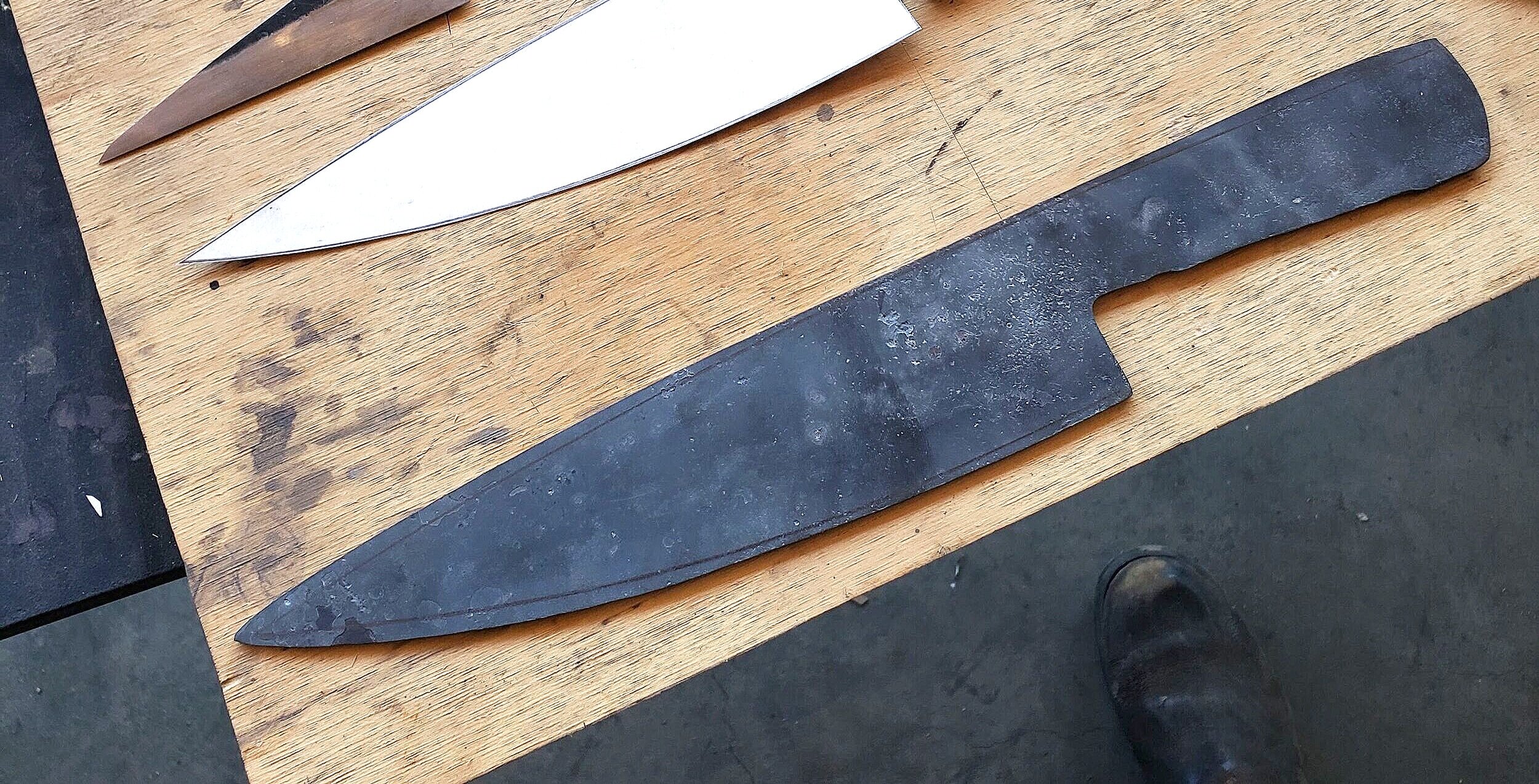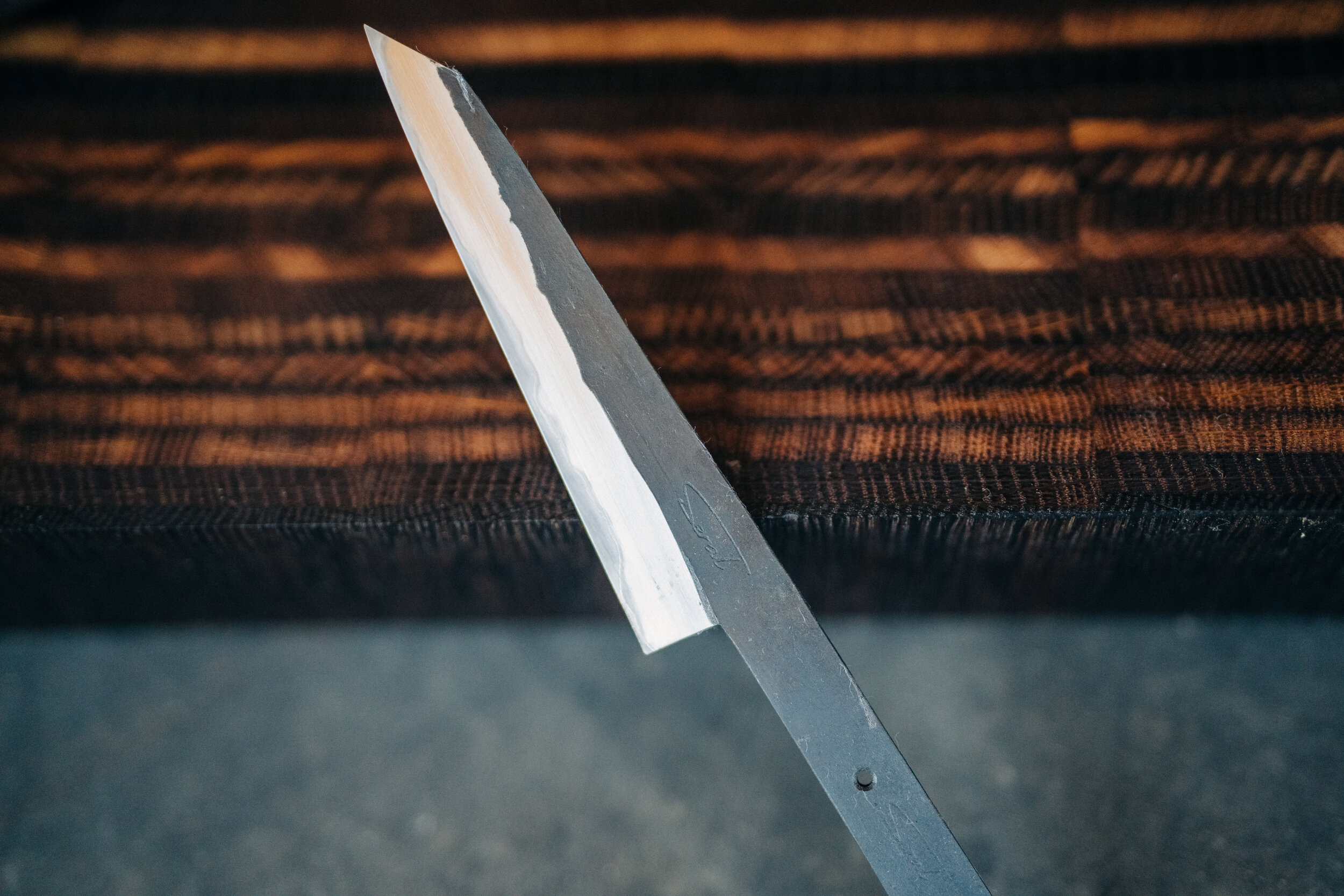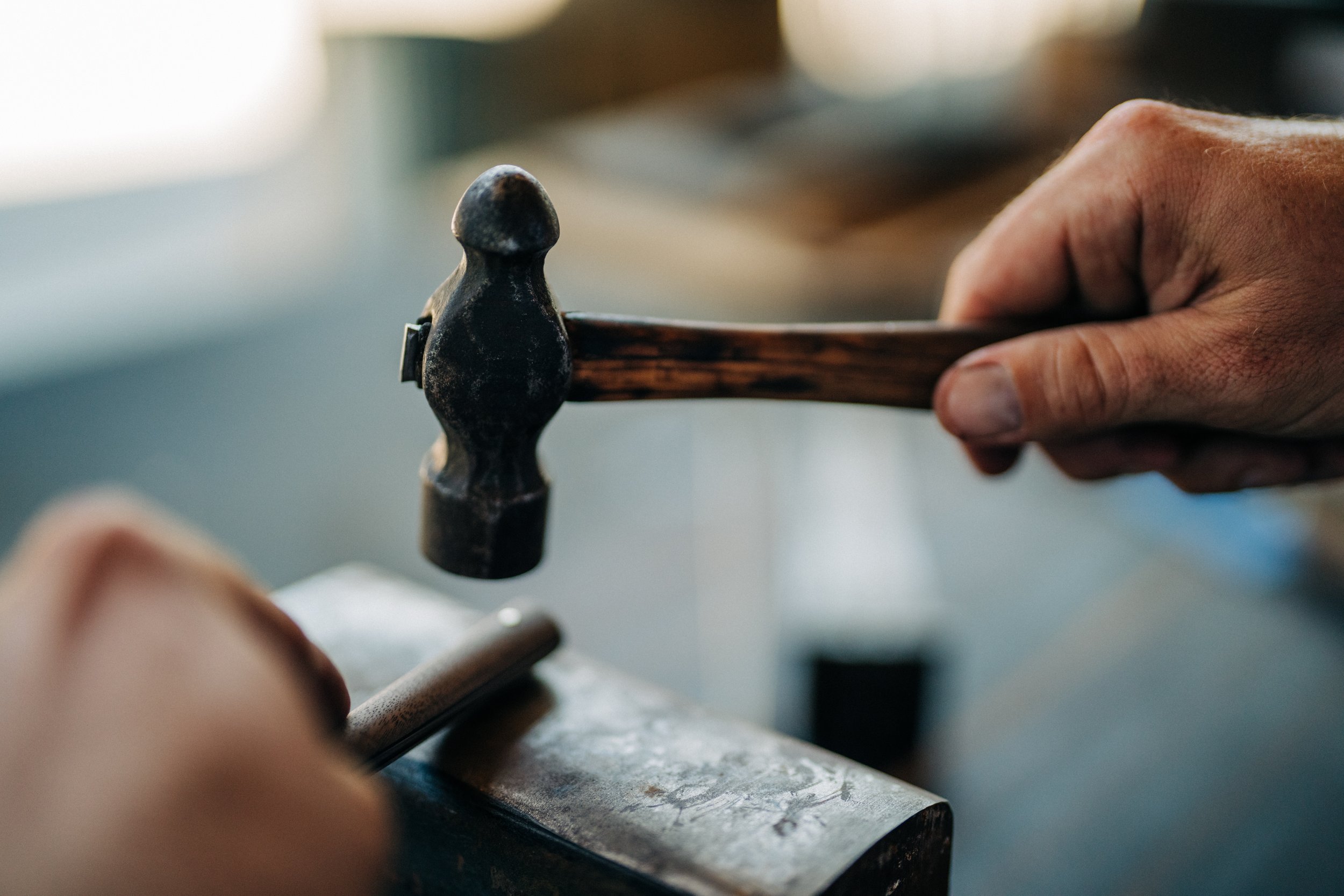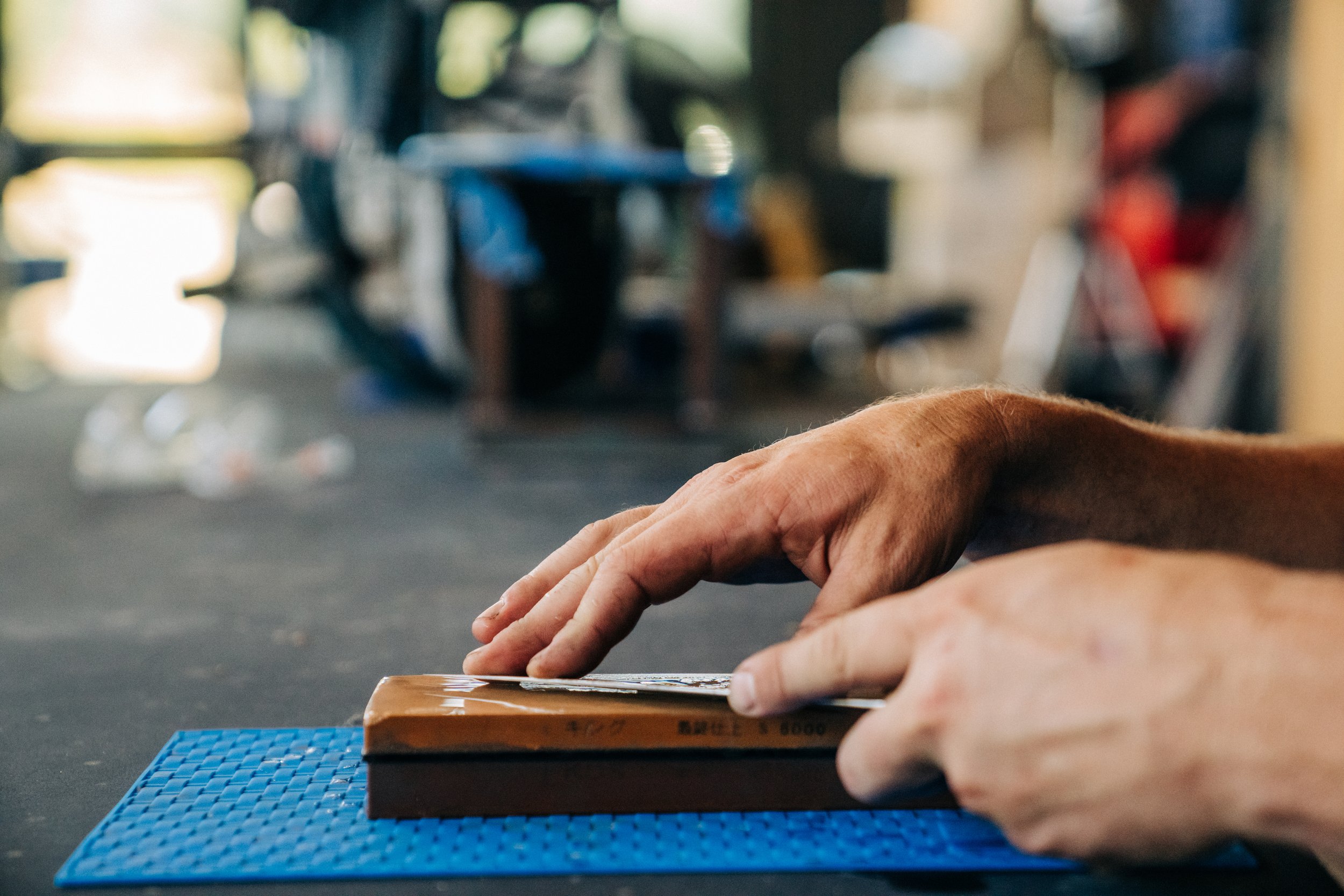
Below is a glimpse into the time and labor which goes into each product we design and craft. This does not reflect the countless hours of education, practice, nor failed attempts. As we learn, our process will evolve and refine. Thanks so much for interest in our craft!
Design Elements
An exceptional knife must take and hold a fine edge. The blade will cut effortlessly through material. The handle should feel comfortable for hours of continuous use. When composed of carefully selected materials, these knifes will have remarkable beauty.
Every project begins with design. Each knife design is tuned to a particular task. Forming a mock knife out of cardboard allows us to consider form and function before creating the steel template. The knife must pass tests of form and function throughout the build.
San Mai and Damascus steel billets are hand forged in house. Each layer is cut, weighed, and cleaned before being welded. High carbon steels and locally salvaged steels are often stacked together to form a durable, visually stunning blade.
STEEL
Heat and force are required to forge weld the layers together into one solid hunk of steel.
For blades featuring damascus (pattern welded steel), we will repeat the process to clean, cut, stack, and forge weld the billet until the desired pattern is achieved. This time-consuming process results in 30% loss of material … but the results are visually stunning.
Once the billet of steel is the correct size, it’s time to hammer out the knife shape. We like to start by using a hammer to hand forge the tip to a point on the anvil.
Forge the blade profile and start to shape handle.
Forged until the rough shape, grain size, and final thickness is reached. Minimal grinding and straightening before heat treating.
Heat treating mostly out of our PID controlled kiln for day time precision. Many knives have been heat treated in the forge. Some steels are quenched in water others in oil. The steel is then tempered to the desired hardness/toughness balance is achieved.
Post heat treating the blades are again check and straightened. Then on to the grind.
Freehand grinding the blades with care and attention to not over heat the steel.
Post grinding, high carbon core exposed near the edge. Forge finish intact above the clean stainless steel.
Local woods from years of collecting and relations ships maintained. Frequent trips to arborist and sawyers. Non of these local trees were harvested for their lumber. Burls from buckeye, redwood, bay Laurel. Highly figured and desired iconic California woods.
After much deliberation Buckeye Burl is sawn on the 1950’s shop smith.
The matched scales set is flattened after splitting on the saw.
Pin holes are drilled before epoxying the handle wood to the knife.
Handles ready for shaping.
Plenty of coffee and a messy workbench. The handles are rough shaped and ready for pins.
Tap tap tap-a-roo the pin is mushroomed to mechanically fasten the wood scales to the steel knife.
After hand sanding and buffing, the knife is sharpend. We hand sharpen on a wet stone to not over heat the thin edge. The knife is tested for razor sharpness before packaging.
Behold! With much skill and labor wood and steel is transformed into a useful and inspiring tool.





















